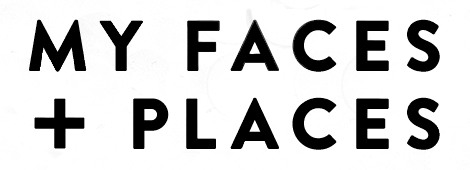Rome The Eternal City

The Colosseum in Rome
Every time I am in Rome, I feel like a time traveller in a Dr Who tardis whizzing through the centuries from ancient to modern Rome in a wondrous journey. The city is like a living museum displaying indelible legacy of its glorious heritage as “Caput Mundi” the capital of the world as it was called by ancient Romans at the height of its power nearly three thousand years ago.

Castle of the Holy Angels the mausoleum of Emperor Hadrian and his families
Today it is more commonly known as the Eternal City. Built on seven hills and founded by a man raised by a she-wolf in a cave is stuff of legend. It was said that twin brothers Romulus and Remus were abandoned as babies in a cave known as the Lupercal by order of their wicked grand uncle who usurped the throne from his brother, the twin’s grandfather. A she-wolf suckled them in her den and looked after them until they were found by a shepherd called Faustulus who raised them as his own. When they grew up and discovered their true identify, they avenged their grandfather by killing their great uncle. They decided to form their own city but a disagreement between the brothers over the choice of location for the city led to the murder of Remus by Romulus. He founded the city on the Palatine Hills, one of the seven hills and called it Rome after his name. Since then the Palatine Hills became the residence of many Roman emperors and aristocrats in antiquity Rome. They built opulent palaces bedecked with columns, fountains, gardens and a stadium. Today only remnants of the palaces remained sprawled forlornly on the hills surrounded by a lovely park that leads to the Roman Forum.
The Roman Forum
The heart of ancient Rome was centred in the Roman Forum, now a large archaeological site and an open-air museum. This erstwhile city centre was a thriving commercial square with shops, restaurants, public buildings and temples, which the Romans used to worship pagan gods. They attributed their success and powers to the gods. Rome produced many powerful emperors, statesmen and generals of whom Julius Caesar was the most well known and Emperor Nero the most notorious for reputedly burning Christians as torches to light up his dinner parties!

The Roman Forum
Rome is an antiquity and heritage feast evoking an emotion of awe, intrigue and bewilderment in a city that was once the epicentre of one of the most powerful empires in the ancient world. Rome was not built in a day and neither can you explore it in a day. It would take a lifetime to appreciate the city fully. History oozes out of very nook and crannies from the ancient labyrinth of narrow streets to a plethora of piazzas surrounded by magnificent buildings from Roman Imperial and Classical to Romanesque, Renaissance, Baroque and Neoclassical style all beautifully preserved.
Circus of Horror in Rome
Near the Forum is the Colosseum, the largest amphitheatre ever built in the world with a capacity for up to 60,000 spectators to be entertained by gladiatorial combats and wild animal hunts, often to the death. Bloodthirsty crowd would bay for blood as the gladiators who were slaves, fought each other with the public placing bets on them.

The internal areas of the Colosseum
Completed in 80AD, it was built in an oval shape in a tiered system surrounded by walls punctuated with arches and columns. There were VIP seats at the front rows for the emperors, high ranking politicians, generals and nobles while the plebeians would be seated right at the top on the cheap seats, much like today’s theatre really. Wild animals such as lions, tigers, leopards, bears, elephants and other wild beasts would be let loose on the gladiators for animal hunts and criminals would be thrown to the beasts as punishments. The amphitheatre was also used for execution of Christians, a minor sect at the time; for staging games and classical mythological drama. The Romans had no qualms in using the same venue for blood sports and cultural entertainment. The gladiators were slaves who were trained to be highly prized fighters and the successful ones were treated like celebrity sport stars of today. It was said that the superstitious Romans believed that the sweat and body oil of a winning gladiator would bring them luck and power and their bodily secretions would be sold at a high prize to the spectators as good luck charm.
Blood sports, Christian executions, festivals and chariot races were also held at nearby Circus Maximus, once the largest stadium in ancient Rome with a capacity for up to 150,000 spectators. It is overlooked by the palaces in Palatine Hills where the emperors would have a ringside view of the activities. Today the stadium is a public park paved with grass and sand that was once soaked with the blood of victims slaughtered in the name of entertainment.
In The Footsteps Of The Romans
Exploring Rome on foot is a great way to see the many magnificent period buildings that manifest the mark of a highly cultured society that appreciated arts and architecture. One of the most outstanding buildings is the Victor Emmanuel II Monument on the Capitoline Hill, an elevated white edifice inaugurated in 1911 as a tribute to the first king Victor Emmanuel of United Italy.

The Victor Emmanuel II Monument
A sweeping flight of steps lead to a vast colonnade leading to the grand building flanked with various allegorical statues, reliefs and murals dominated by the colossal equestrian statue of the king himself in the centre. At the foot of the statue is the tomb of the Unknown Soldier guarded day and night by guards of honour. The monument resembles a massive altar and is also known as “Altar of the Nation” crowned on each side by the winged statue of Victory riding on a quadriga (chariots drawn by four horses). Because of its shape and colour, it has been nicknamed “the wedding cake”.
An exemplary example of stunning Roman architecture is the Pantheon built by Emperor Hadrian in 118 AD. It is a rotunda fronted by a rectangular portico supported by a colonnade of eight Corinthian columns topped by a pediment. The rotunda with a diameter of 43.4m is crowned by a massive dome with exactly the same height, hailed by modern architects as an ingenious architectural feat.

The Roman Pantheon
The magnificent dome has an uncovered round opening to the sky called the oculus that provides the only source of natural light into the building and the light shaft changes like a sundial at different time of the day. It is believed to create awareness of the cosmos by the ancient Romans. When it rains, the water flows into the building and runs off the slightly convex floor into still functioning Roman drainpipes below.

The mystical oculus in the Roman Pantheon
The interior is opulently ornate with alcoves, vaults and columns bedecked with statues, iconography and tombs of Italian kings and famous historical figures including Raphael the Renaissance painter. It is the best preserved ancient monument in the world and today it serves as the Catholic church of Santa Maria Rotunda.
Rome is like an open-air art gallery with exquisite statues, sculptures and fountains abound on beautiful squares such as the Piazza Navona, a popular and lively square with cafes and restaurants surrounded by one of the finest Baroque buildings in Rome. In the middle of the square stands the famous Fountain of the Four Rivers by Bernini featuring four figures from different continents representing the Nile, Ganges, Danube and Rio de la Plata.

Fountain of the Four Rivers at Piazza Navona
One of the most famous fountains in the world is Trevi Fountain, which has recently been cleaned and spruced up. Standing at 26.3 metres high and 49.15 metres wide, it is the largest Baroque fountain in the city located at the junction of three roads, hence its name.

The Trevi Fountain
The fountain is built against the backdrop of the Palazza Poli that gives the illusion that it flows out of the palace wall. The theme is the Taming of the Waters with water gushing over rocks featuring Triton, the Greek god of the sea guiding the chariots of Oceanus, the divine personification of the ocean, taming the mythological winged sea horses. There are various allegorical figures that complete the dramatic fountain. It is believed that if you throw a coin using the right hand over the left shoulder, you will always return to Rome. It is estimated that about 3000 Euros are thrown in the fountain every day by tourists and the money goes to charity. For now it is arrivederci Roma as I throw a coin in the Trevi Fountain to assure my return to the Eternal City.
The Historic Centre of Rome is listed as a UNESCO World Heritage Site
For tours and private guide in Rome and beyond contact Rome City Tours www.romecitytours.com Email: info@romecitytours.com
© MyFacesAndPlaces.co.uk



